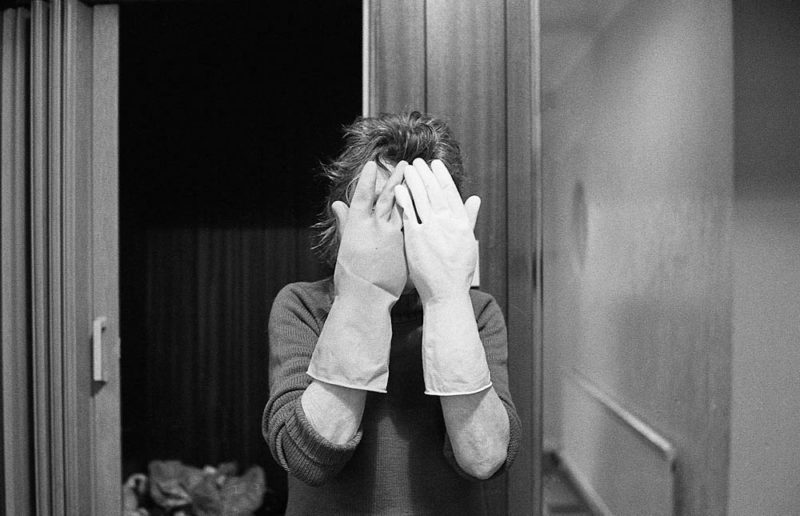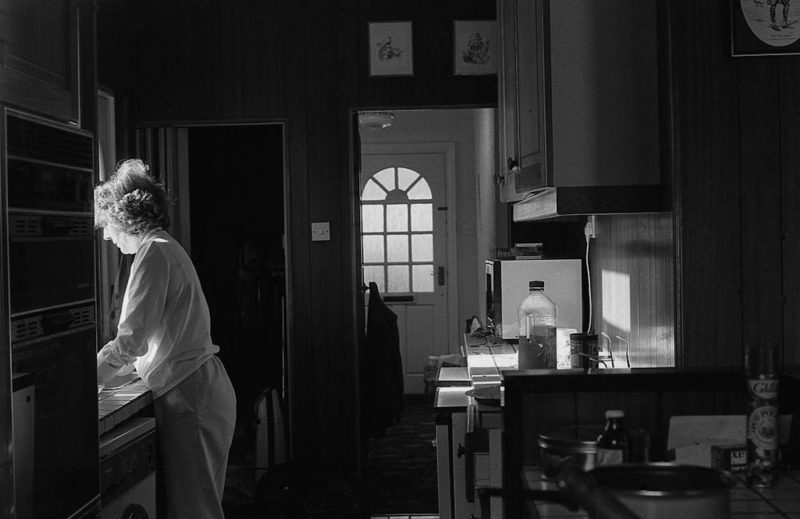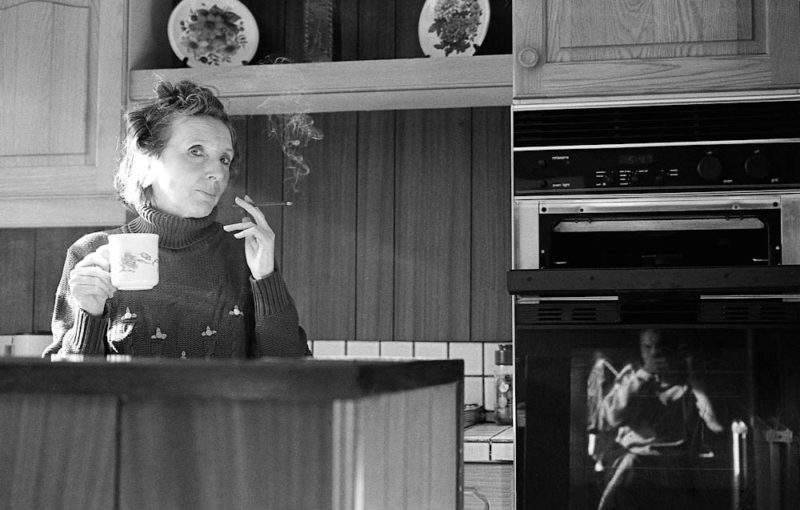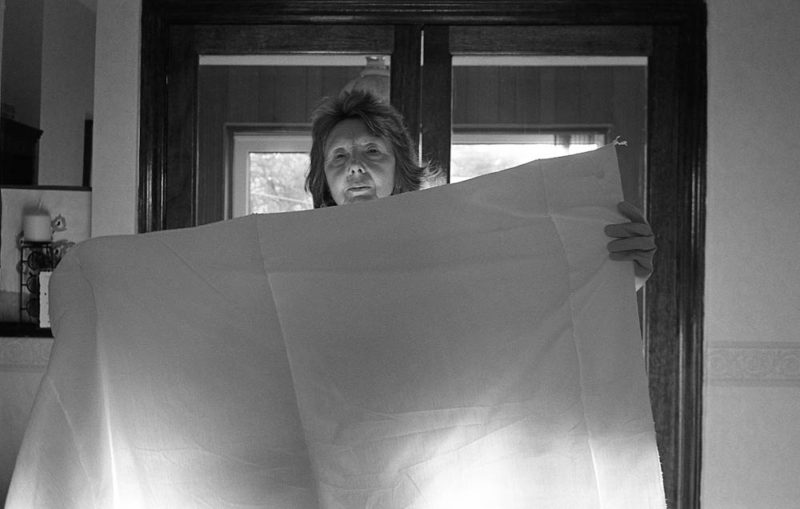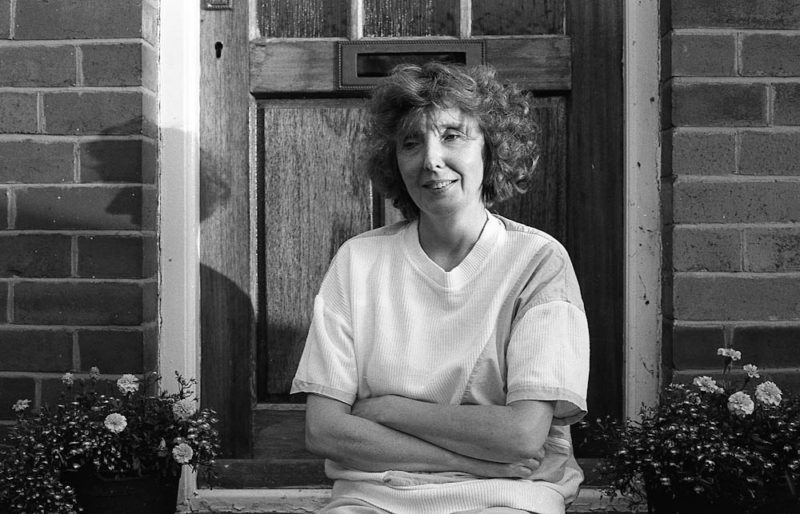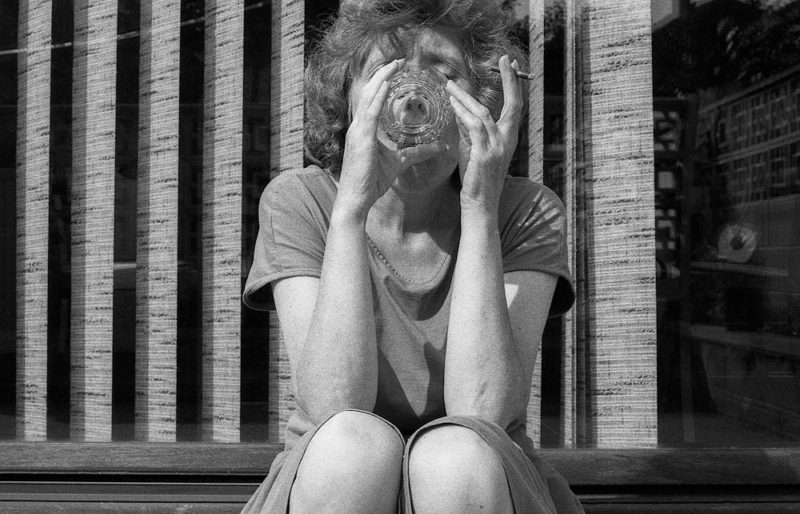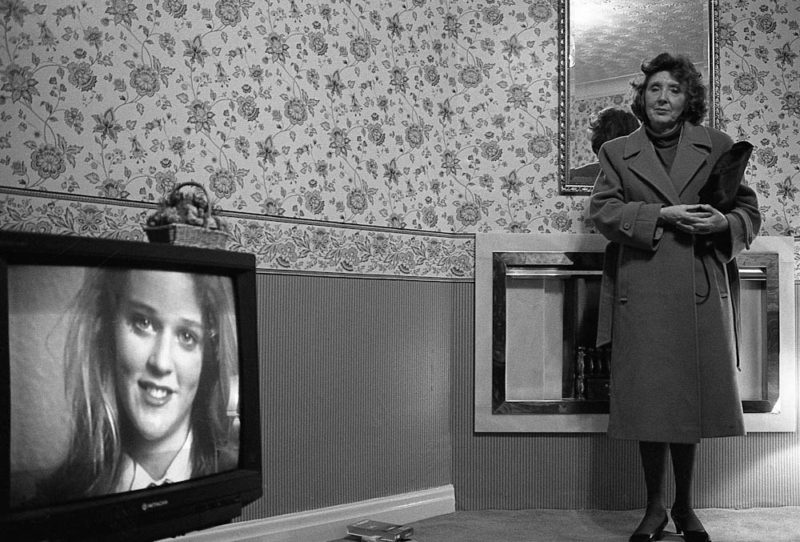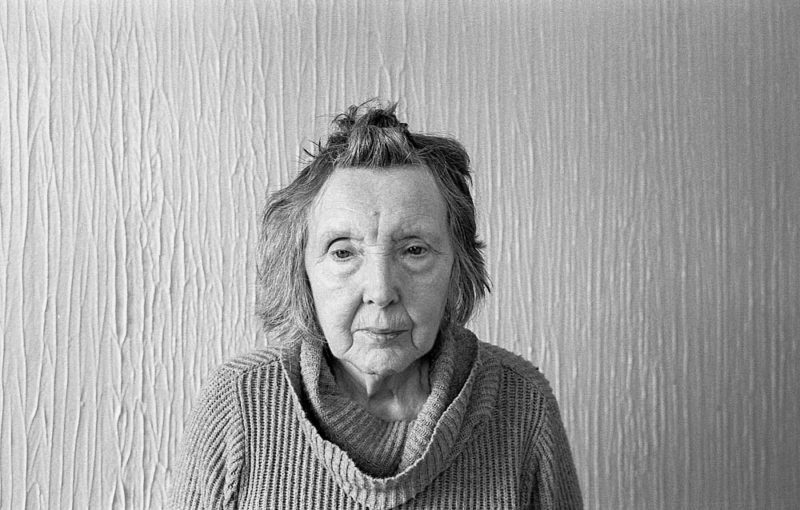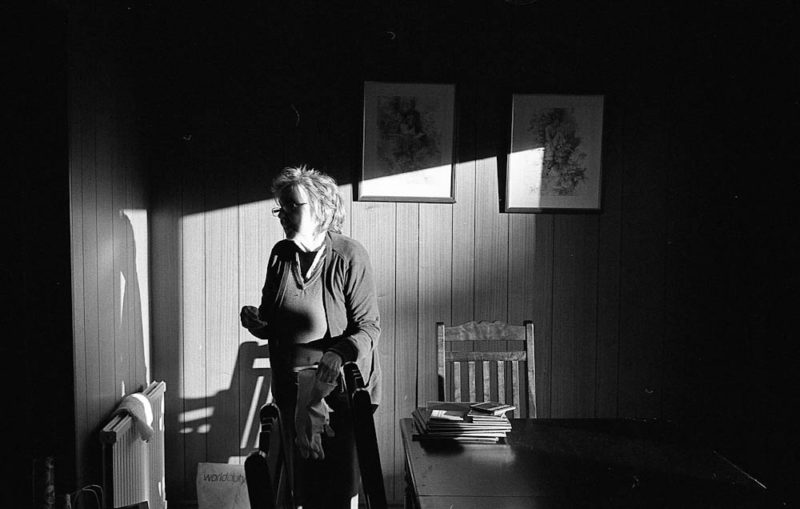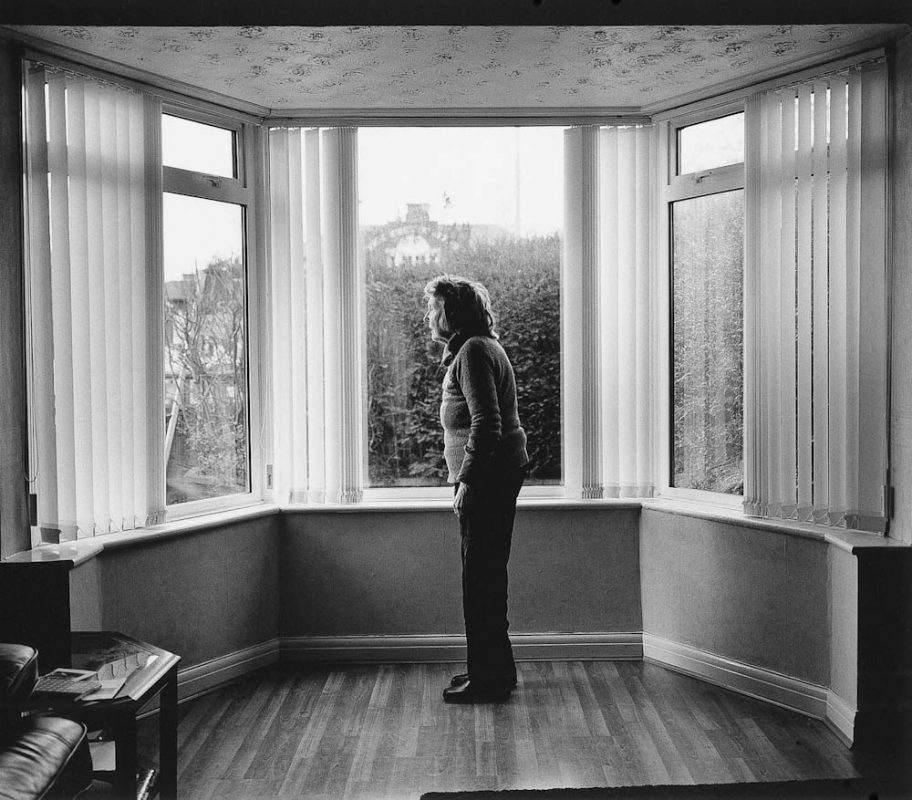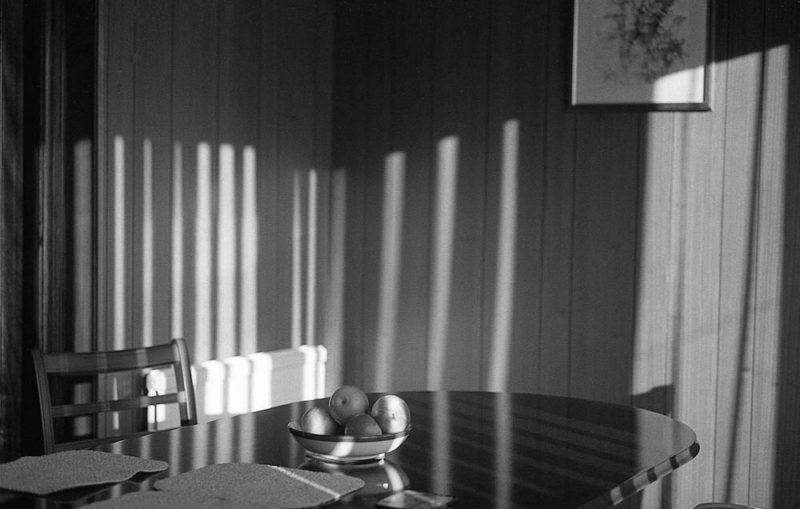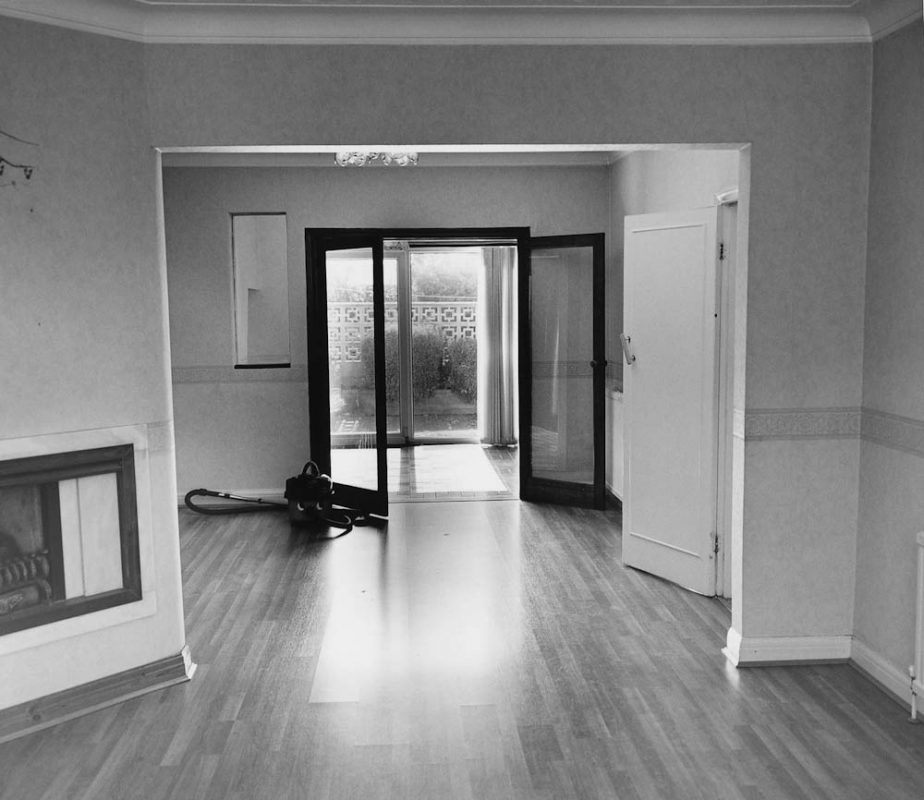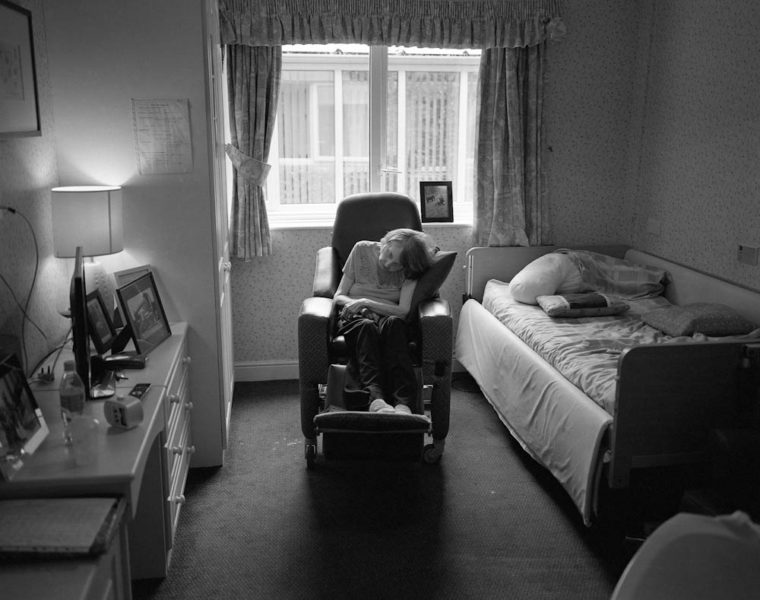Matthew Finn
Mother
Essay by Elizabeth Edwards
How does one comprehend a life photographically, and the experiences that make it? Matthew Finn’s photographs are an account of a life, that of his mother in Leeds, its slow transformation, its slow retreat from the shape of the everyday – an everyday marked by things, relationships with things and people, which make up an experience of the world. The photographs are not portraits in the usual sense of the word, yet they are an account of a life, a deeply humanistic response to a set of human circumstances. In this brief essay I want to use his photographs from the Mother series as a springboard to think about what we find in photographs at a human level and, briefly, how we might characterise our curiosity – that desire, through engagement with the communicative potential of photographs, to find and understand.
These are ideas which have preoccupied me for a while, and they informed the conversations we had as he developed this work as part of the Jerwood/Photoworks Awards. We come to these matters from very different directions. I found these photographs very good to think with, because they transferred ideas that I had developed in historical anthropology into the field of contemporary documentary photography. Conversely I hope our conversations also gave Matthew another analytical position through which to inform his practice. Because at base we had identical concerns: how can photographs articulate experience? What it is to live through a moment, and, reflexively, our relationship with the desire to understand that moment?
Some historians are very wary of experience as a category of historical analysis, arguing that experience is simultaneously too embedded in unproblematised and ahistorical notions of the individual, too objectifying and too fleeting to be held and be subject to critical analysis. But this, of course, is exactly what photographs do rather well, they hold the atomic structure of experience. They can expose it in all its dialects – experience, social being and presence – in ways that go beyond mere representation. The photographs track an experience generated and articulated through material life, and map a social being that determines social consciousness or experience. This process does not aim to create new forms of empirical understanding around photographs, but rather to undertake a kind of experiment – a sensitisation to a space in which the trace of experience might be located.
The concept of ‘presence’ is of particular pertinence here, and in relation to photography more generally. The philosopher of history, Eelco Runia, has attempted to track the shifts in historiographical desire from meaning to experience. He argues that while we search for understanding of mechanics of meaning (with photographs the fixation with linguistically- derived semiotic models perhaps), what we are actually searching for is something else, and that thing is ‘presence’. He writes “presence is being in touch, either literally or metaphorically with people, things, events and feelings that made you the person you are.” It is the “desire to share the awesome reality of people things, events and feelings, coupled to a vertiginous urge to taste the fact that awesomely real people, things, events and feelings can awesomely suddenly cease to exist.” And in many ways it was this statement that made, for me, the connection with Matthew’s work – because the photographs track a person who gradually ceases to exist in the way that they have been known for so long. His photographs cogently, and indeed poignantly, map the shifting marks of people on space and the shaping of people by space.
Further, presence is traced into the very materiality of photographs, into its chemistry and now its electronic pulses turned into pixels. It is the ontological scream of the medium. That is its power and its symbolic significance. In particular a photograph is a moment, positive or negative, especial or banal, happy or terrifying, that someone lived through, their being, their presence, their standpoint, literally a standpoint is traced in the image. As Ulrich Baer puts it, “each image has the potential for disclosing the world – as a setting for human experience”, a rippling out from the image itself.
Presence is, of course, part of the idea of representation – to make something present again, a substitute for the absent. The most fulsome articulation of such a position in relation to photographs is Roland Barthes’ famous contemplation of the photograph of his mother as a child in the Winter Garden. With its deep subjectivity it brings us closest to the sense of presence which I have in mind. The photograph Barthes describes stabs and wounds him because of the intensity of the photograph’s rendering of his mother’s presence. He describes the failure of other photographs to connect as a failure of ‘presence’: “I never recognised her except in fragments, which is to say that I missed her being, and that I therefore missed her altogether”, whereas the Winter Garden photograph achieved, utopically “the impossible science of unique being.” That is, we might surmise, both the presence of the individual and the social presence of that being, laminated together.
But why do we want to know this? Why do we want this sense of a person’s presence and experience? As humans we are naturally curious, perhaps a defining characteristic of human existence. But such desire becomes subject to psychoanalytical models with their emphases of spectatorship and desire, and has been conflated with ideas of power, gaze and the fetishistic. This is certainly so at one level. But, arguably, curiosity also means an expansive wish to understand and relate. Michel Foucault expressed this well: “Curiosity is a vice that has been stigmatized in turn by Christianity, by philosophy, and even by a certain conception of science” but it is also, as in Matthew’s photographs with their gentle combination of curiosity and presence, that curiosity “evokes the care one takes for what exists and could exist; a readiness to find strange and singular what surrounds us; a certain readiness to break up our familiarities.” Thus, in this reclaimed form, ‘curiosity’ comes to mean a ‘world-openness’, even wonderment, a form of epistemic and conceptual inquisitiveness which opens up multiple meanings that stem from a consciousness of ignorance and the capacity for interest. Analytically there has, perhaps too often, been a slippage between the human relations of curiosity and the ideologically-determined gaze. This is not to elide the politics of either, but if we hold these concepts apart analytically, we might find a space in which the gentle desire for human understanding, such as represented in Matthew’s photographs, might find an interpretative resting place. ♦
All images courtesy of the artist. © Matthew Finn
This essay was originally commissioned for Matthew Finn, Mother, due to be published by Dewi Lewis and has been reproduced with kind permission.
–
Elizabeth Edwards is a visual and historical anthropologist. She is Andrew W.Mellon Visiting Professor at the V&A Research Institute (VARI), Emeritus Professor of Photographic History at De Montfort University, and Honorary Professor, Department of Anthropology, UCL. Specialising in the social and material practices of photography, she has worked extensively on the relationships between photography, anthropology and history. Her monographs and edited works include Anthropology and Photography (1992), Raw Histories (2001), Photographs Objects Histories (2004), Sensible Objects (2006) and The Camera as Historian: Amateur Photographers and Historical Imagination 1885-1912 (2012). She was elected a Fellow of the British Academy in 2015.

